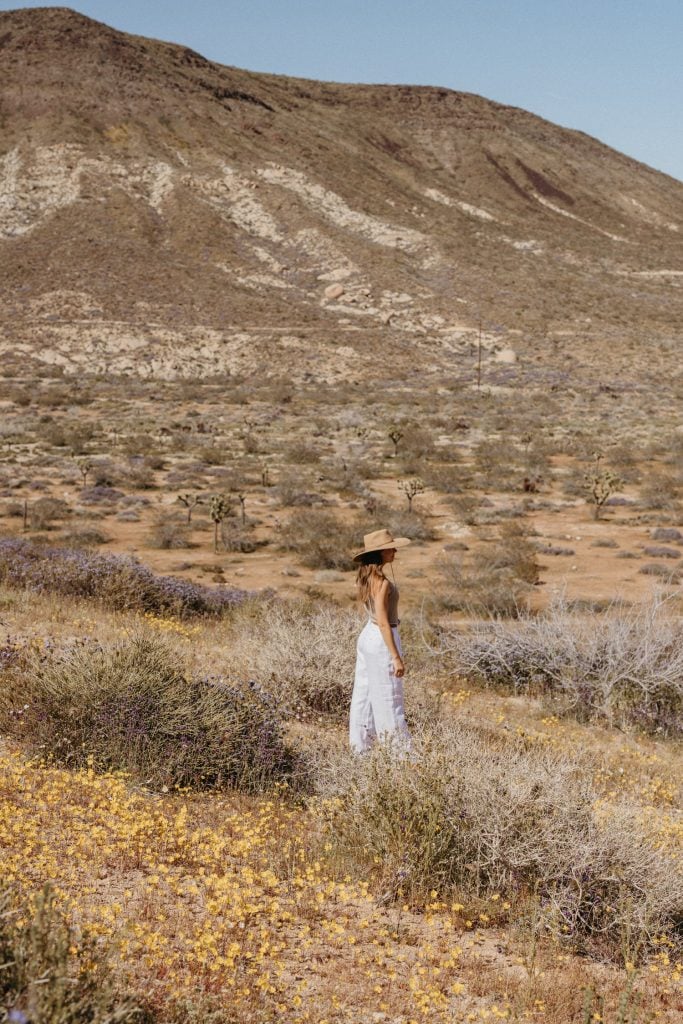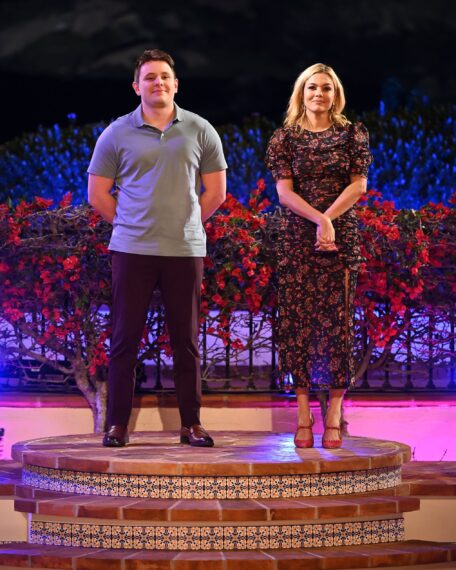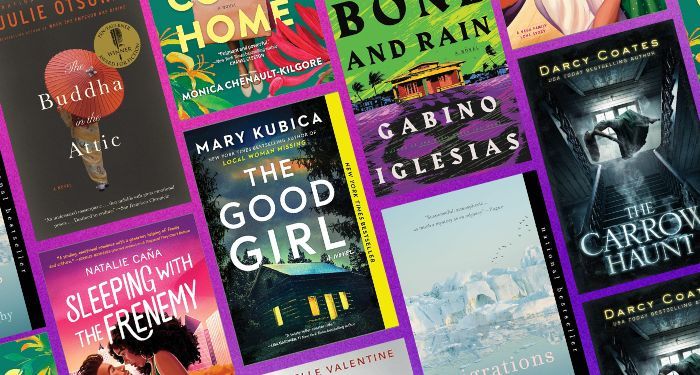Jenn Shapland has thin skin, literally. Thin Skin uses her medical diagnosis as a prism to examine the thinning of boundaries between our bodies and the world: “to be thin-skinned is to feel keenly, to perceive things that might go unseen, unnoticed, that others might prefer not to notice.” Mesmerizing and carefully, dutifully written, these essays delve into the weight of capitalism, the negotiation of identity through consumerism, and the misguided and harmful weapon of white womanhood reaching back to US colonization.
“This book begins in the free fall of reality,” Shapland writes early on about humanity’s exposure to radioactive toxins, and I cannot help but agree. Reality often feels like a free fall. I picture the devastation of the pandemic, the recent Canadian wildfires, and Shapland’s literal—and metaphorical—navigation of her relation to the world. It makes me wonder if we are still falling, unable to look at this reality.
Yet Shapland faces it and asks us to do the same. Thin Skin is quintessentially tied to the reader’s, and Shapland’s own, relation to our current landscape from the curation of identity to the uncertainty of our climate. Thin Skin asks us to lean into our own beliefs and choices, reconsider what we knew and engage in new revelations, and open our eyes to the smallest and largest choices that impact the world around us.
In our email correspondences, Shapland spoke to me on the infestation of clothes moths that inspired an essay, what it means to speak out about radioactive chemicals in local environments, and current narratives that perpetuate violence and racism.
Gracie Jordan: In your title essay, you speak about your diagnosis, which is where I read a subtle tension between being diagnosed with thin skin versus having thin skin. When did you realize that your diagnosis could serve as a sort of metaphor for the thinning boundaries between us and the outside world? Had you already started writing the essay collection?
Jenn Shapland: It took me a long time to see the threads of sensitivity and vulnerability running through the collection. The dermatological diagnosis, which I found a bit rude, to be honest, came years before I wrote the title essay, but it stuck around in my mind. Do I have thin skin, literally or figuratively? If so, what does it mean and what does it feel like to look closely at different forms of contamination and toxicity? In what ways can research and writing be forms of self-contamination? Or exposure therapy?
GJ: You talk about the impact that your research on environmental toxins had on you in “Thin Skin.” In passing along this knowledge—which you see as a form of contagion, a way to make everyone see—you speak on the idea that “learning and knowing and thinking are not modes of healing, repair” but a way to cope, and yet you wrestle with the idea of sharing. “Why do I feel like I have to know all of this and tell people about it?” you question. “Who actually wants to know?”
Interrupting the research with your own questions can be a source of comfort, of pause. How did you persevere through your wrestling and conclude that this needed to be shared, even if the audience felt uncertain?
JS: I often find myself wanting to speak out in my writing about something that other people don’t want to talk about, or don’t talk about readily. I think this comes from a childhood of repression, of euphemisms, of things unsaid or talked around. This may be why I wrote a book about lesbian invisibility, an essay about suicides by train, an essay about theft from the archives. But none of those pieces hit me in quite the same way as “Thin Skin.” Because the effects of chemicals, like uranium mine waste, like nuclear waste, like steel mill runoff, like fertilizer plant runoff, are so difficult to trace, difficult to prove, insidious, ever-present.
As I write in the essay, I struggled with how much to tell people, specifically about radioactive chemicals in our local environment. And I was nervous about “Thin Skin” being the first essay in the collection. So many horrible things are happening all the time, and we are aware of them to a greater extent than ever before because of the news, the internet. Who would want to read a whole essay about the things that are poisoning others and us? Rachel Carson and her work became a touchstone for me, because she made this pivot with Silent Spring to writing about chemicals, even though the rest of her work had been quite different. It had to do with what felt most necessary and important to share with others. We don’t really get to choose our subjects.
GJ: I was captivated with the topics surrounding “Strangers on a Train.” So much so that it made me consider my own thought processes as a woman. You explore the idea of fear and safety, particularly growing up as a woman, and how fear “thrives in the absence of clarity and reason.” While you were in NYC alone, where no one walked the same street, you describe it as being “afraid of no one.” This put language to my own experiences. Yet after reading feminist theory and discovering the structures that preach this fear, you decided to pursue and reclaim personal independence and freedom. Throughout the essay, you ask the reader to reconsider the idea of strangers (“stranger danger”) and conclude that “the fear I feel is real, but the threat never is.” I am curious about the in-betweens. What was the catalyst within your readings that led to this realization, and what do you want the reader to consider within these discoveries (on strangers, trust, fear, female safety)?
JS: I kept getting afraid when I took the trash out at night. I wanted to stand around and look at the moon, the stars, but my heart would start pounding, I’d imagine that someone was lurking in the shadows waiting to pounce on me. I tried to understand what was behind that fear, and out of it came “Strangers on a Train.” I revisited significant moments when I’ve felt afraid for my own safety, when I’ve been camping or traveling alone, and alongside those I delved into the history of that fear, why I was made to feel afraid (by my parents, by my community, by the culture at large).
Underneath the messages that governed my life as a girl and as a woman lurked racist, colonialist histories that actually had nothing to do with me or with real threats to my safety. They were cannily crafted and unconsciously developed at significant moments to keep women in their place, but even more than that to justify harming others, from lynching Black and Hispanic men in the South and Southwest to the extermination of Native peoples. If women are seen as threatened, if girls are seen as threatened, almost any kind of violence can be justified within a patriarchal framework.
GJ: It seems that the deeper topic you wish to call attention to is the murdering and kidnapping of Indigenous women that is generally ignored by the public in lieu of protecting the “frailty” of white women. This, in turn, erases and devalues victims of violent crimes and re-centers white women in the discussion. Throughout these ideas, you speak on the culturally embedded, racially charged need to create a controlled narrative. Yet you end with a consideration of these messages that promote your own fears and whether they are necessary to believe, but then we see this fear resurface subconsciously when you were “still a woman alone” while hiking. Can you expand upon this balance of researching and realizing where these controlled narratives come from yet struggling to eradicate them from your own mind, while also wanting to bring light to the violent target against Indigenous women?
JS: The concept of white womanhood was created (consciously and unconsciously) as a weapon to use against people of color, from the earliest days of US colonization. And so my own wrestling with white womanhood, with the fact that I am a white woman, is trying to kill the cop inside my head, to recognize all the ways that construction—which includes the idea that I am fragile, in need of protection, that I am not safe, that I shouldn’t travel alone, that I should protect myself at all costs—is untrue and does damage to others, damage in which I am complicit, especially if I’m not aware of it, vigilant about its effects.
But fear is not part of our prefrontal cortex, our reasoning brain, it’s part of our lizard brain. Which means it moves faster than thought, like when I’m sitting alone and hear a man’s voice and my heart starts pounding. And it’s there, in that moment, that I have the choice to notice it and question it, rather than believe the instinctual fear that’s been ingrained in me by our culture since childhood.
GJ: In the preface, you mention how the essay “The Toomuchness” was inspired by the moths, which you saw as a “metaphor made literal, the ultimate intersection of capitalism’s excess and human mortality.” Though the moths do not infest the essay as they do your clothes, they do begin and end the essay, as well as pop up throughout discussions as if small reminders of where this started. How did you see them as an impetus, a driving force, for this essay? It feels almost summed up in this line: “They made me buy stuff for my stuff, and I already have too much.”
The concept of white womanhood was created (consciously and unconsciously) as a weapon to use against people of color.
JS: I think the essay grew out of confronting my stuff each season, each year, trying to get rid of things, and then the moths, the actual infestation—it was, as Joan Didion once said of the child on LSD, “pure gold.” And it was something that got under my skin, confronting my own excess, our culture’s, this swarm of bugs. The unstoppability of it. The feeling of contamination. Of complicity.
GJ: You use the idea of a closet to represent identity due to consumerism and materialism’s close ties to a sense of self. You see the clothes you cannot part with as a way to access various parts of yourself. How did the closet materialize in this essay to explore identity, whether personal or in reflection of culture?
JS: It’s funny, because I’d been writing about clothes, shopping, and being closeted for awhile before the closet itself rose to the surface. And when I began reflecting on my own closets, I found quite a lot! That my very first office for writing was a closet. The amount of time I spent in the doorway of my closet watching TV as a kid. The endless wrangling with not enough storage space. And I’ve long been haunted by the amount of storage facilities that dot the U.S. landscape, especially in big cities, how strange it is that we store stuff we can’t even use. But the way the closet connected my relationship with shopping and clothes to queer identity came as a surprise to me as I was writing. Often we hide things from ourselves in plain sight!
GJ: Before you end “The Toomuchness,” you suggest that “Our individual carbon footprints are too small to have any real effect” but wonder if your “tiniest actions do have global consequences.” Can you speak more on how this essay shaped this conclusion, especially in reference to the weight of capitalism?
JS: One of the questions that surfaced in writing that essay was “how can I feel so much—feel so bad—and have so little control?” The idea that our individual actions and choices do have effects, both in the world in and in our own lives, our own psyches, helps to make room for that conundrum.
Even if nobody sees it, your actions have meaning, have impact.
In a lot of writing and in a lot of people’s responses to climate change and the role that consumption in industrialized nations contributes to that, I see a pivoting away from the bad feeling toward apathy or helplessness: nothing we do matters, it’s up to the corporations, to the governments to get this under control, my recycling does nothing. Which leads people to like… not recycle? And I find this utterly bizarre, especially given the world I grew up in. This might be a legacy of being raised Catholic (which I no longer am), but even if nobody sees it, your actions have meaning, have impact. Throwing your recyclables in the trash leaves its mark on you, on your beliefs about how you are connected to a larger web of beings. I sound like a narc right now, but come on!
GJ: “Crystal Vortex” explores the tension between art as activity versus product, and your personal need for time—waiting—to write. As your first book, My Autobiography of Carson McCullers, took six years to write and “The Toomuchness” took five years, what tension exists for you in the waiting and producing? How do you navigate the waiting within a culture ravenous for production and instant gratification? How do you let your works realize themselves over time?
JS: This is an ongoing craving for me. I want to wait for the work to come, to develop in its own time, and yet I feel so many external pressures to write quickly. Looking out at the literary landscape, at least as it presents itself on the internet, I see people publishing books every two years, every year and a half, even, and all the while tweeting throughout the day, and putting out Substacks and newsletters. I’m curious about the flip side of that, what it means to sit with a question for a long time before writing about it or publishing anything. Some of the essays in this collection developed over years. Books have always existed on a different timescale than the news, than our everyday lives. They ask us to step outside of that time and enter into this much longer, ongoing conversation.
A metaphor has surfaced in my garden. When I first started trying to grow things in the high desert, I saw that the soil was dry and watered the plants a little every day. Plant after lovingly-selected plant died. Then I learned this is the opposite of what the plants need. They require deep watering, but infrequently. Which means it takes longer to water each plant. You dig a little moat around the plant and fill it with water, and then you have to stand there and wait for the water to seep into the soil, then fill the moat two more times. I’m taking a break from writing projects for the first time since I started the McCullers book (since I wrote my dissertation, technically), and in that space I’m trying to understand what it might look like to approach writing with this kind of depth, a slower pace.


























































